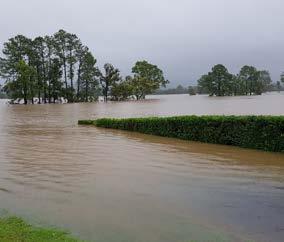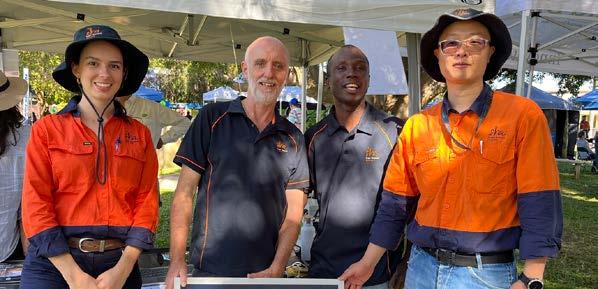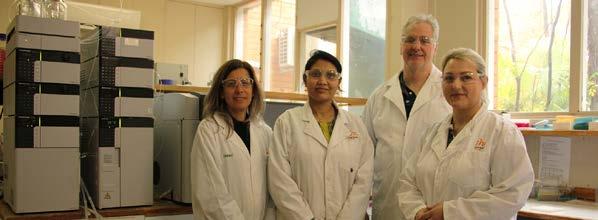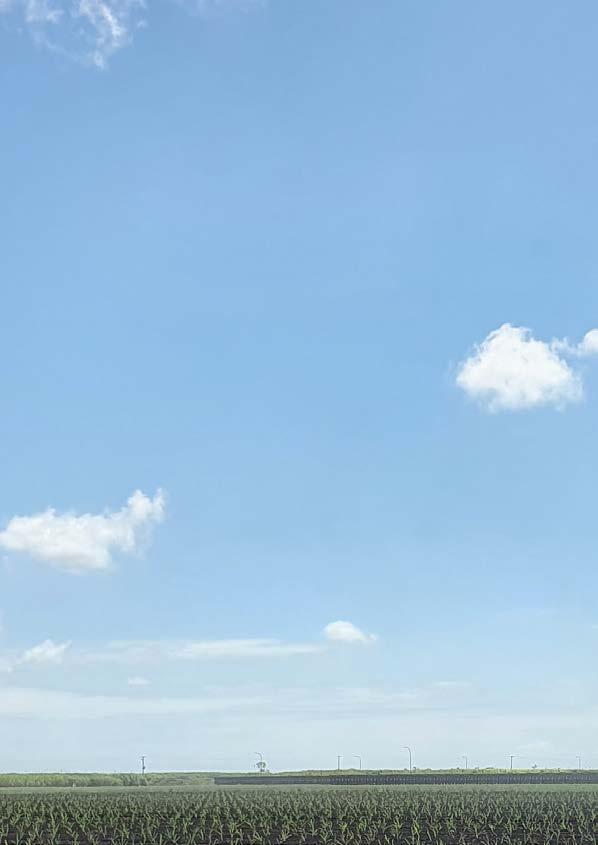
10 minute read
Strategic Pillar 1 – Strong foundations
Evolve SRA to keep pace with the changing industry landscape by developing a capable, engaged, and safe workforce, and a lean, agile and entrepreneurial organisation with an agile and efficient cost-base
Financial security and agile cost-base
Advertisement
In line with its Strategic Plan 2021-2026, SRA aims to achieve a small net surplus each year from 2022 to support a sustainable financial position that is no longer reliant on cash reserves.
SRA’s 2021/22 budget targeted a modest surplus of $180,000. We outperformed this target to achieve a positive net position of $444,000. This was achieved through a concerted focus on controlling discretionary spending. The team also worked to increase returns from commercial endeavours and non-traditional grant funding. SRA achieved a net positive cash position of $5 million, against a budgeted $2.1 million. Our year-end cash position was $29 million, compared with $24 million in 2021. Projections for continued financial sustainability and a small net surplus each year (excluding extraordinary oneoff items) are based on four key dependencies: profit from a collaborative research consultancy – where researchers consult at commercial market rates
profit from commercialisation opportunities continued delivery of efficiency savings levies based on 30 million tonnes per annum. Our ability to drive further efficiencies is dependent on fit-for-purpose, integrated technology solutions to streamline and automate insights, knowledge capture and reporting. Work to develop a whole-of system technology transformation plan will be a critical body of work during 2022/23.
Property strategy and planning
SRA has committed to develop and implement an asset strategy to lower the total cost of ownership across asset classes and to optimise property assets. During the past year, SRA undertook a strategic property review at its Indooroopilly site with a view to relocating employees to a leased site and selling the property. Financial statements in this Annual Report note the sale of the Indooroopilly site as an event occurring after the 30 June reporting date. The property settled on 30 September 2022 and SRA exercised an option to lease the property back. The Indooroopilly site will continue to accommodate SRA’s administrative employees and laboratory functions while suitable alternative accommodation is finalised. Work was also undertaken to ensure all property assets are in a serviceable condition. Preliminary work has commenced on a property review of the Mackay site which is in need of significant refurbishment.
Rain and flooding impacts
Heavy rain and flooding that severely affected northern New South Wales and South-East Queensland in early 2022, brought impacts to SRA operations at Indooroopilly, Woodford and Broadwater.
The Indooroopilly property experienced water inundation and a ceiling collapse in the chemistry laboratory, while water also inundated the ground floor of the administration building. Employees were required to work from home and chemistry laboratory staff were subsequently relocated to other parts of the facility. An insurance claim was approved and repair works have been completed. Woodford was twice impacted by flooding, with access to the site affected by road closures. While buildings were not damaged, fencing needed repair after waters subsided. In New South Wales, SRA employees occupy space at Sunshine Sugar’s Broadwater site. With Broadwater significantly flooded, mill and SRA operations were impacted. Staff were relocated to temporary accommodation provided by Sunshine Sugar.

A safe workplace
SRA has maintained a strong focus on moving towards a proactive safety culture of learning and continuous improvement, with health, safety and environment (HSE) integrated into our way of working. Despite this focus, our total recordable injury frequency rate (TRIFR) rose from 24 to 43 following several medical treatment injuries early in the financial year, reinforcing the need to continue with the safety improvement plan. The main achievements against the safety improvement plan were the development of SRA’s health and safety management system and implementation of a safety management and leadership program. The program was delivered to leaders across the business, including fieldbased leaders, through workshops conducted at Meringa, Mackay and Brisbane, supported by virtual “teams” deployment sessions. Health and safety engagement activities included promotion of safe work week, with themed events across sites.
During February, SRA commissioned an independent external HSE compliance audit. All audit findings were managed to ensure effective systemic resolution and monitoring. As actions have been completed and evidence documented, the external auditor has independently reviewed the evidence and verified compliance with legislative requirements. Improvements in the safety management system and the leadership development program contributed to the following outcomes: a strong reporting culture with HSE hazard and incident reporting increasing 24 per cent in the past 12 months and averaging 16 per cent higher than the previous three years no reportable environmental incidents a 74 per cent improvement in investigation cycle completion times increased risk awareness, understanding and registers developed throughout sites SRA’s lost time injury frequency rate (LTIFR) ended the year 60 per cent lower than the previous year – falling from ten to four
SRA’s serious injury rate reduced from six to zero, well below the industry average for Queensland and
Australia. Recent data shows an average serious injury rate for Agriculture in Queensland of 9.9, compared with 9.6 nationally (source: Key work health and safety statistics Queensland 2021, Safe Work Australia)
SRA is working with industry and universities to explore innovative solutions to further mitigate risks where the business is undertaking field activities.
Culture and engagement
SRA undertook a culture and engagement survey during 2022 to determine its current and ideal culture. The survey is based on the Human Synergistics Organisational Culture Inventory (OCI) and Organisational Effectiveness Inventory (OEI). The engagement result of 75.4 per cent placed SRA ahead of the average 74.8 per cent, a solid foundation from which to target the constructive (top-performing) benchmark of 82 per cent. Outcomes at an individual level were above average for clarity of role, motivation and intention to stay, role alignment and management of stress. The main opportunities for improvement relate to satisfaction and job security. Group outcomes reflected strong intra/inter and department level cooperation and coordination. However, scores around beliefs in relation to the delivery of highquality services and products to external clients and how SRA recognises and responds to changes in our external environment, present some opportunities for improvement. Having completed the survey, the business will now undertake action planning and identifity focus areas for improvement.
A diverse workforce
SRA has placed a concerted focus on improving its diversity profile and promoting inclusion. An online discrimination, sexual harassment and bullying training module was updated through the year, with a completion rate of 98.5 per cent. Representatives of the people and culture team attended a Reconciliation Action Plan (RAP) information session presented by Reconciliation Australia, with a view to progressing development of a RAP during 2022/23. Acknowledgement of Country and our First Nations People has formed an integral part of internal and external stakeholder meetings during the past financial year. By 2025, SRA is striving to have a diverse workforce that is reflective of the communities in which we operate in terms of numbers of Indigenous employees, employees with disabilities and employees from non-English speaking backgrounds. We have also targeted gender diversity, with a goal that 50 per cent of senior leadership and researcher positions are occupied by women by 2022 and 50 per cent of Board positions are held by women by 2024. While the past financial year saw positive movement towards these objectives, there remains further work to do. Women hold 43.5 per cent of senior leadership and research positions in the organisation, an increase from last year. Gender diversity on the Board also increased towards the 2024 target. An initiative undertaken during the year as part of SRA’s remuneration framework was the creation of an internal position-grading evaluation panel. The panel supports SRA’s commitment to diversity, engagement and building a high-performance culture. Gender equity was a focus in a review of scientific roles across SRA. Benchmarking through the Workplace Gender Equality Agency (WGEA) showed SRA performed favourably against industry trends for lowering the median gender pay gap. SRA's gender pay gap reduced from 7.3 per cent to 5.3 per cent placing it n the top 10 per cent of the comparison group. WGEA's report indicates that every industry in Australia has a pay gap favouring men when comparing the average pay of men and women across the organisation as-a-whole.
SRA's Chemistry Laboratory team members at Indooroopilly: Peimaneh Lee-Steere, Farzana Darain, Andrew Lynch and Heidi du Clou.
Female and male staff
30 June 2020 = 43.4% female, 56.6% male
30 June 2021 = 41.2% female, 58.8% male
45.6%
54.4%
30 June 2022
Female leaders and researchers
100%
75%
50%
25%
0%
39.6% 40.7%
2020 2021
43.5%
2022
Board positions occupied by women Target 50% by 2024
100%
75%
50%
25%
0%
14.3% 14.3%
2020 2021
28.6%
2022

Strategic Pillar 1: Outcome measures
Deliver small year-on-year surpluses
Target – Deliver small year-on-year surpluses (measured based on underlying results and not including decisions to strategically invest reserves) Result – SRA outperformed the budget target to achieve a positive net position of $444,000, above the original target of $180,000. This was achieved through a concerted focus on controlling discretionary spending and increased returns from commercial endeavours and non-traditional grant funding. Source: SRA
Safety maturity
Target – Achieve safety maturity against safety improvement plans by 2023 Result – The main achievements against the safety improvement plan were in continuing to develop SRA’s health and safety management system and the development and implementation of a Safety Management and Leadership program. In relation to the former, 50% of the 12 standards were revised and deployed, with the final 50% to be delivered in 2022/23. During the same period, the Safety Management and Leadership program was delivered to business leaders.
SRA operates within approved reserves thresholds
Target – SRA operates within approved thresholds Result – SRA was not reliant on cash reserves to operate, generating a net positive cash position of approximately $5 million. Year-end cash position was $29 million.
Staff engagement
Target – Achieve progressively improved staff engagement by 2022 (against the SRA leadership index and staff engagement index) Result – Results from SRA’s culture and engagement survey indicate an engagement score of 75.4%. This places SRA ahead of the average 74.8%, a solid foundation from which to target the constructive (topperforming) benchmark of 82%. Source: Human Synergistics Organisational Culture Inventory and Organisational Effectiveness Inventory

Source: SRA
Culture maturity
Target – Progress towards cultural attributes of a learning and innovative culture Result – Results from SRA’s culture and engagement survey suggest there is strong intra/inter and department level cooperation and coordination. However, scores around beliefs in relation to the delivery of high-quality services and products to external clients and how SRA recognises and responds to changes in our external environment, present some opportunities for improvement. Source: Human Synergistics Organisational Culture Inventory and Organisational Effectiveness Inventory
Gender diversity (staff)
Target – Ensure that 50% of senior leadership/ researcher positions within SRA are occupied by women by 2022 Result – SRA increased the number of senior leadership and research positions occupied by women from 40.7% to 43.5% over the period. Over the same period, SRA increased the total number of positions occupied by women across the organisation from 41.2% to 45.6%.
Source: SRA
Gender diversity (Board)
Target – 50% of SRA board positions are occupied by women by 2024 Result – The proportion of board positions occupied by women increased from 14.3% to 28.6%. Source: SRA
Workforce demographics
Target – Ensure that SRA’s workforce demographics are representative of the communities in which we operate in terms of numbers of Indigenous employees, employees with disabilities, and employees from non-English speaking backgrounds by 2025 Result – 56% of SRA staff responded to a voluntary survey reporting the following results: 30% of staff are from a non-English speaking background, 5.8% identify as having a physical or cognitive disability, 55% have caring responsibilities for children, elderly parents/family members or those with a disability, and 1.4% identify as Indigenous. Source: SRA








